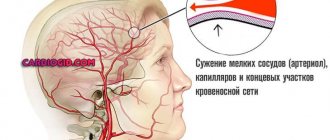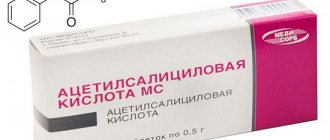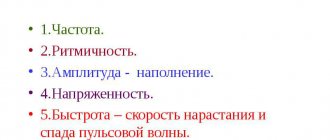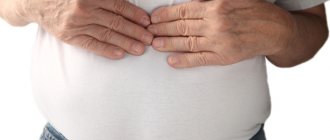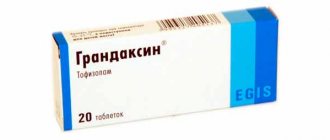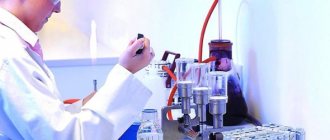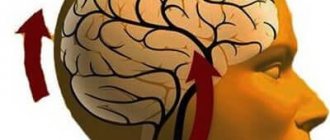Astheno-neurotic syndrome is a type of neurosis that can occur in both adults and children. Asthenoneurosis leads to people becoming nervous and constantly experiencing increased fatigue. The disease is often called asthenia, neuropsychic weakness, chronic fatigue syndrome, asthenoneurosis or asthenic syndrome.
The disease usually arises and develops due to abnormalities in the activity of the entire autonomic nervous system. A person with asthenic syndrome constantly needs support and protection.
The number of patients with asthenia increases several times every year. The sharp increase in the growth of cases is associated with an accelerated pace of life, poor ecology, regular stress and depression. Astheno-neurotic syndrome often worries vulnerable children who take everything “to heart,” actively react to any stimuli and get upset even because of small failures.
Asthenoneurosis can be confused with fatigue, which occurs with increased mental or physical stress. According to the ICD, 10 patients are diagnosed with code F48.0, which stands for other neurotic disorders.
Causes of the disease
The causes of the appearance and development of the syndrome include a fairly large group of factors. Sometimes determining why a disease occurs is quite difficult. To do this you need to find a truly qualified specialist.
The most common causes of asthenic syndrome include:
- Frequent stress. Strong experiences and tragic events can lead to overstrain and exhaustion of the nervous system, and, consequently, to the occurrence of asthenia.
- Infectious diseases. Any infection that occurs along with fever and intoxication of the body causes the death of nerve cells and the appearance of asthenic syndrome.
- Brain injuries. Even minor bruises often lead to disruption of the functioning of the entire brain. Injuries become especially dangerous in childhood, when the bones of the body are still weak and fragile, and the brain is actively increasing in size. It is because of this that you should never shake or toss a newborn baby.
- Regular overstrain of the nervous system. Lack of rest and a corresponding deterioration in well-being now occurs in every second person on Earth. Recently, even children have begun to face this problem.
- Vitamin deficiency. The decline in the amount of minerals and vitamins in the body leads to exhaustion and weakening of the nervous system.
- Intoxication. Smoking, alcohol abuse and drug use poison brain tissue, causing the death of a huge number of nerve cells.
- Diseases of the endocrine system. Disturbances in the functioning of the pancreas, thyroid and gonads often lead to cell death and the development of asthenia.
- Personal characteristics of a person. Quite often, asthenoneurosis occurs in those people who underestimate themselves as individuals. Patients also become prone to excessive dramatization and suffer from increased impressionability.
- Social factors. Every person sooner or later experiences difficulties at work, in school or in his personal life. All these cases also have a negative impact on the functioning of the autonomic nervous system.
In children, astheno-neurotic syndrome can occur due to:
- Fetal hypoxia;
- Infections during the intrauterine development of a child;
- Injuries received during childbirth;
- Various defects of the nervous system;
- Bad habits of the mother during pregnancy.
Reasons for the development of the syndrome in adults and children
Pathology is usually classified as a polyetiological category. In genesis there is no single factor that determines development.
Astheno-neurotic syndrome (asthenia) develops over a certain period of time under the influence of a number of situations. What exactly is the trigger is difficult to find out.
Each type of character will have its own reaction to external and internal stimuli. In scientific circles, a theory is being considered that the development may be caused by a disorder in the nervous system: insufficient amounts of mediators, oxygen supply, or a malfunction in the functioning of the brain.
This hypothesis is supported by a minority of scientists, while the majority are inclined towards a variety of genesis.
Causes in children and adolescents
Minors are more susceptible to neuroses. This is due to an incompletely formed nervous system and mental instability. It is noted that astheno-neurotic syndrome in children directly depends on intellectual development. The higher the mental ability score, the greater the risk of psychological stress.
The autonomic nervous system combines the sympathetic and parasympathetic divisions. These parts perform functions opposite to each other: the first accelerates processes, increases the speed and intensity of the work of a system or organ, the second slows down and weakens.
In a normal state they are in balance. Under the influence of “trigger” events, the balance may be disrupted.
Then the synthesis of hormones increases, vascular tone destabilizes, the pulse quickens or slows down, respiratory function is impaired, or pain appears. However, clinical studies, as a rule, do not reveal organic lesions.
Clinicians have described 32 syndromes and 150 symptoms of vegetative-vascular dystonia. Often the development of VSD syndrome is signaled by one or more of the following signs:
- headaches, loss of consciousness;
- feeling of lack of air, pressure behind the sternum, shortness of breath;
- dizziness;
- burning, chest pain on the left, heart rhythm disturbances;
- fatigue with minor exertion, weakness, internal trembling;
drowsiness, insomnia;- unstable blood pressure;
- constantly cold extremities;
- narrowing the circle of contacts and interests;
- weather sensitivity;
- depression, decreased libido, apathy;
- slight periodic increase in body temperature (370 – 37.50);
- unreasonable attacks of fear (panic attacks);
- previously unusual disturbances in the functioning of the gastrointestinal tract, frequent urination, profuse sweating.
Astheno-neurotic syndrome in children is still more common than in adults and this is due to the fact that the child’s psyche is much more unstable. What reasons can stimulate the development of such a serious mental illness?
- Infections of a bacterial or viral nature, which are accompanied by neurotoxicosis.
- Hypoxia during childbirth becomes a stimulus for the appearance of the syndrome in the future.
- Meningitis, encephalitis and other inflammatory diseases affecting the central nervous system.
- The hereditary factor cannot be discounted.
- Not enough vitamins and beneficial microelements in the diet.
- Head injuries, even if they seem minor.
- Constant conflicts at school and at home can cause ANS.
Astheno-neurotic syndrome in adults develops against the background of the same reasons, but several more are added to them:
- chronic intoxication of the body or drug addiction;
- chronic overwork against the backdrop of an irrational daily schedule;
- high cranial pressure;
- metabolic disorders in the brain.
Symptoms of asthenoneurosis
Typically, patients do not attach much importance to the first signs of the syndrome, as they attribute them to fatigue. People turn to a doctor for help when it becomes impossible to cope with accumulated problems on their own. Most often, the diagnosis is made if there are no somatic or neurological disorders.
The first symptoms of asthenic syndrome include:
- Apathy and causeless irritability;
- Regular fatigue;
- Decreased immunity, which leads to the occurrence of infectious and colds.
In children, severe asthenoneurosis manifests itself differently than in adults. The child is observed:
- Sudden mood changes;
- Lack of appetite and complete refusal to eat;
- Uncontrollable attacks of aggression;
- Frequent crying and moodiness;
- Taking out anger on toys and favorite things;
- Continuous fatigue;
- Regular pain in different areas of the head;
- Decreased academic performance at school;
- Difficulty communicating with other children.
Stages of asthenic syndrome
Doctors distinguish 3 stages of asthenoneurosis:
At first, neither patients nor their loved ones usually suspect the presence of pathology. People associate all the accompanying symptoms of asthenia with fatigue and do not take the first signs of the disease seriously. Gradually, a person ceases to control his behavior; at any moment he can suddenly laugh or cry.
At the next stage of development of the disease, excessive emotionality and deterioration of well-being appear: frequent headaches, a constant feeling of fatigue, and decreased performance. The patient is regularly bothered by insomnia; he always wants to lie down to rest, but his strength is not restored even after sleep.
During the third stage, the clinical picture of the syndrome becomes obvious. Fatigue and anxiety are replaced by complete indifference to absolutely everything that happens around. A person is no longer interested in films, any kind of entertainment, or new acquaintances. Prolonged depression appears, which can only be overcome with the help of antidepressants.
Typically, people with astheno-neurotic syndrome seek medical help at the second or third stage, when it is no longer possible to cope with the disease on their own. If the syndrome has reached the final stage, patients no longer try to improve their well-being. Relatives and friends bring them to the doctor.
Treatment
The course of treatment will be aimed primarily at eliminating the cause, but if advanced pathologies of internal organs are involved in the process, you will also have to cope with their consequences. Chronic diseases of the kidneys, heart and blood vessels, problems with blood circulation and digestion, breathing and sex life in some cases come to the fore when astheno-neurotic syndrome in adults goes hand in hand with bad habits and abuse of an unhealthy lifestyle.
Depending on the situation, the patient is prescribed:
- consultations with a psychotherapist;
- a course of drug treatment;
- physiotherapy;
- Spa treatment.
If vegetative dystonia syndrome arises from an incorrect lifestyle, a specially selected diet is prescribed that corrects nutritional habits and provides the body with the necessary elements to stabilize its functioning.
Consequences and complications of the disease
Most often, asthenoneuratic syndrome occurs in a chronic form. But if at least minimal treatment of the pathology is absent, serious complications can arise:
- Stroke;
- Heart attack;
- Stomach ulcer and exacerbation of gastrointestinal diseases;
- Hormonal imbalances.
Also, in the absence of adequate therapy, depression may occur, which sometimes even leads to suicide. In the initial stages of the disease, a person is still able to help himself.
Complications of asthenia in children can lead to malfunctions of the thyroid gland, and, consequently, to disorders in the reproductive system. In adults, problems with reproductive function may occur.
Diagnostics
Diagnosis of the disease, first of all, involves an oral interview with the patient. The doctor must find out everything that worries the patient. Usually the clinical picture of the disease becomes clear in its first stages. That is why it is not difficult to start treating asthenic syndrome as early as possible. The main thing is to determine the real cause of the disease, since it is its elimination that guarantees successful treatment and complete recovery of the patient.
Diagnosis of cephalgia
First stage
To determine the exact cause of cephalgic syndrome, the doctor needs to ask the patient about the nature of the headache:
- Localization of unpleasant sensations;
- Duration of pain;
- Presence of other nervous disorders.
The disease can be diffuse, localized or bursting in nature. The most common first type, which occurs as a result of nervous disorders and psychological stress. In this case, the pain affects the entire head with equal force.
With localized pain, which may result from visual impairment or high intraocular pressure, pain occurs in a specific location.
The last, bursting type, is a sign of intracranial pressure and hypertension.
Cephalgic syndrome is divided into 2 stages. The first reveals the presence of pulsation, often coinciding with the beat of the heart. The second is the frequency of occurrence of cephalalgia and the severity of the syndrome. If the cause of the disease is vascular disease, then pain will appear due to an imbalance in intracranial pressure. Usually, unpleasant sensations arise at a certain time and increase sharply. The pain will appear in new places each time and gradually increase if the syndrome was caused by a nervous disorder or overstrain of the central nervous system.
Secondary symptoms, such as fear of bright lights and loud sounds, also play a huge role. Such disorders are more common in adults than in children.
Second phase
After an oral interview, the patient should undergo a physical examination phase. The patient should visit an otolaryngologist, an orthodontist and a neurologist. If a child is suspected of cephalalgia, it is necessary to consult a pediatrician, who will establish the correct diagnosis.
After examination by doctors, the patient is prescribed an electroencephalogram. This is an examination with a special device that helps to record the biocurrents of the brain. If a malfunction is detected during the passage of impulses, specialists identify cephalgia.
If the results of the study are negative, the patient is prescribed an ultrasound of the great vessels of the head and an MRI, and the condition of the brain, blood vessels and musculoskeletal system is checked.
Treatment of asthenoneurosis
Therapy for the syndrome should be comprehensive and include several areas:
- Taking medications. Usually, during the first stage of development of the syndrome, one can limit oneself to the use of herbal tea, vitamin complexes and the use of traditional medicine. If a person’s health worsens, the doctor prescribes various sedatives, and sometimes antidepressants.
- Psychological help. In the early stages, the disease can be cured even at home: aromatherapy, relaxing baths and walks in the fresh air.
- Healthy lifestyle. Proper nutrition, exercise and a clear daily routine will help cope with any disease, including asthenoneurosis.
Drug treatment
Drug therapy involves taking the following drugs:
- Sedatives: “Sedasen”, “Persen”, as well as tinctures of motherwort, hawthorn and valerian. The course of treatment must be at least two weeks.
- Antidepressants with the least number of side effects: Novo-Passit, Azafen, Doxepin, Sertraline.
- Antiasthenic agents: Enerion and Adamantylphenylamine.
- Nootropics: “Phenibut”, “Cortexin”, “Nooclerin”.
- Adaptogens: “Chinese lemongrass”, “Eleutherococcus tincture”.
- Vitamin complexes: “Neuromultivit”.
Physiotherapeutic procedures are also usually prescribed along with drug treatment: therapeutic massage, aromatherapy, electrosleep and reflexology.
Psychotherapy
Therapy for asthenic syndrome is impossible to imagine without the help of a psychologist. The patient should definitely visit a specialist to clarify the diagnosis and prescribe appropriate treatment.
Typically, a psychotherapist advises a patient to take a break from his own illness and take up a hobby, for example, collecting coins, crocheting or painting. Also, art therapy or sand therapy has been helping patients cope with asthenoneurosis for many years. You should not neglect breathing exercises, as it helps not only to relax the whole body, but also to recharge yourself in a good mood.
The following recommendations will help you cope with the disease:
- First of all, you need to get rid of all bad habits;
- You should do strength exercises and expose your body to cardio exercises every day;
- Work should always be alternated with rest; you should not overexert yourself;
- It is worth adding more meat, soy, beans and bananas to your usual diet;
- It is mandatory to take vitamin complexes;
- And the most important thing is to maintain a great mood throughout the day.
Traditional therapy
First of all, we should not forget that treating asthenia only with traditional methods is extremely undesirable, since a positive effect can only be obtained with complex therapy. But as an additional effect, doctors recommend the following recipes:
Mint leaves, trefoil roots and valerian in equal proportions, approximately 2 tbsp. l., you need to finely chop and mix. Afterwards, add 2 tsp to a glass of boiling water. collect, leave for an hour in a warm place, then strain. Every day you should drink half a glass in the morning and evening. The course of treatment is a month.- 2 tbsp. l. motherwort should be poured with a glass of boiling water and placed in a water bath for 20-30 minutes, without bringing to a boil. Then you should add boiled water to the volume that was in the bowl at first. Take the decoction 3 times a day before meals, 1⁄3 of a glass.
- Valerian and motherwort can also be taken in tablet form. The attending physician must determine the required dosage. To prepare an infusion of valerian officinalis, add a tablespoon of the herb to hot boiled water and leave for 20 minutes. Take a quarter of a glass three times a day and before bedtime.
- Chamomile, St. John's wort and hawthorn must be mixed 1 tbsp. l. and pour a glass of boiling water. The infusion should stand for 30-40 minutes. It is recommended to take the medicine before going to bed.
- Combining St. John's wort with dried linden blossom will also help cope with chronic fatigue. You need to mix 1 tbsp. l. components and leave the infusion for 20 minutes. The drink should be taken on an empty stomach in the morning and in the evening before bed, 50 ml. Sometimes an alcohol tincture is prepared from herbs, which must be taken 2-3 drops before meals.
- To improve your mood and stimulate the nervous system, you can take a course of treatment with Schisandra chinensis or Eleutherococcus, which are sold at any pharmacy. The products have a beneficial effect on the entire body, help boost immunity, recharge with energy and a positive mood. Tinctures will also help cope with apathy, hysteria, hypotension and headaches due to asthenic syndrome.
Diet for neuro-asthenic syndrome
It is necessary to exclude fatty meat, any fried foods and hot seasonings from the patient’s usual diet. You should limit your consumption of coffee and tea; you can replace them with infusion of hawthorn or rose hips. It is recommended to eat as many fruits and vegetables as possible. Vegetable oil, black bread and fatty fish will also help improve your well-being. And in order to cheer up, experts recommend eating a slice of dark chocolate a day and under no circumstances consuming baked goods.
Treatment of the syndrome in children
Treatment of asthenic syndrome in children is slightly different from treatment of the disease in adults. To help your child you should:
- Introduce into his diet as much as possible the right healthy food, useful with vitamins and various microelements;
- Eliminate drinks that contain caffeine from your diet;
- Ventilate the baby’s room several times a day;
- In the evening you need to spend time in the fresh air, it is especially useful to walk just before bed;
- Ensure full, healthy sleep both during the day and at night;
- Avoid watching TV and playing on the computer during an exacerbation of the disease.
Characteristics of headache
With a vegetative disease, symptoms can manifest in different ways. Cephalgia with VSD is divided according to the nature of the pain into:
- intense,
- permanent,
- pulsating,
- pressing,
- short-term
- impulsive.
When the pain is intense, the symptom is pronounced, the person’s general condition sharply worsens, and their performance decreases. Any movement can cause pain, which is aggravated by loud noise or bright light.
The patient experiences constant pain for a long period of time. At the same time, it does not become weaker or stronger. This is observed with venous stagnation in the vessels of the brain.
Pulsatile syndrome is characterized by the presence of pulsation in the vessels. This is observed when large vessels are affected. The pulsation is located in one place. This often causes blood pressure to rise. This type of headache is often observed in children with vegetative-vascular dystonia and acute hypertensive encephalopathy.
The pressing nature of the pain occurs over a large area. Patients feel that the head is being squeezed on both sides or around the entire circumference.
Short-term - appears for a short time and passes quickly. It can be easily relieved with painkillers. For some, the symptom becomes more frequent and takes on a different character.
Impulsive is manifested by tingling from mild sensations to sharp local pain. With frequent manifestations, the patient loses ability to work.
By origin, cephalalgia is:
- vascular;
- neuralgic;
- muscular;
- mental;
- liquorodynamic;
- mixed.
Vascular appears due to a violation of the tone of the vascular walls and deterioration of blood flow in the brain. Due to disturbances in vascular tone, VSD develops. This is the most common type of pain syndrome.
The liquorodynamic character is manifested due to venous stagnation and secretion of cerebrospinal fluid in the ventricles, which put pressure on the brain tissue and contribute to the manifestation of pain.
With muscle pain, the syndrome occurs in a segmental manner due to a disruption in the transmission of nerve impulses. By nature, this type is primary, so it rarely manifests itself in dystonia.
Neuralgic pain occurs when nerve endings become inflamed. This type is not typical for VSD.
Mental character is caused by mental disorders. The cause of the symptom is considered to be a violation of the central mechanisms of pain. The mechanism of pain depends on endogenous factors.
The mixed nature may include different mechanisms of disease occurrence. This type of pain is often observed with dystonia. Due to disturbances in vascular tone, activation of any of these mechanisms occurs.
Prevention of the syndrome
To prevent the disease, the same drugs that are necessary to treat the syndrome are suitable. Experts advise introducing a daily routine, most of which should be rest. You should switch to a healthy diet filled with vitamins and beneficial microelements. In this case, it is necessary to limit the consumption of fats and carbohydrates. Physical exercise and walks in the fresh air will also help distract from the symptoms of “chronic fatigue” and improve a person’s overall well-being.
Forecast
Asthenoneurosis is not a serious disease if treated promptly. People with asthenia need to be registered with a neurologist, follow all his recommendations and take the necessary medications. A healthy active lifestyle, good mood and a positive outlook on the world also play a decisive role in the treatment of the syndrome. The main thing is not to start the course of the disease, which can lead to memory deterioration, decreased concentration and the development of depression or neurasthenia.


